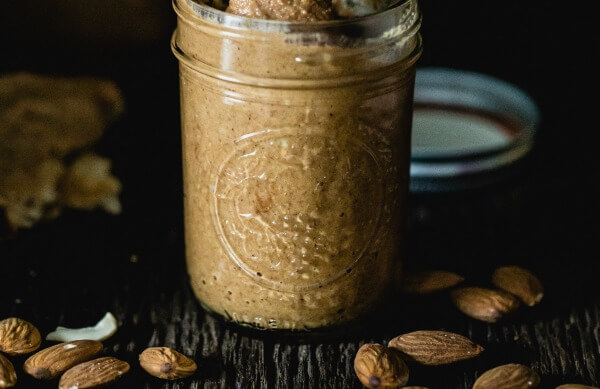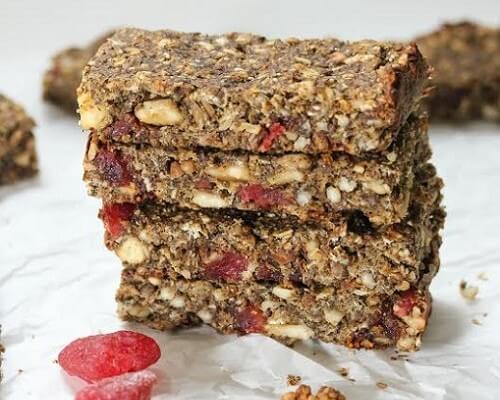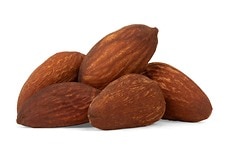Phosphorus
The human body relies on the presence of dozens of vitamins and minerals to function properly. These micronutrients act on a cellular level to affect a variety of physiological processes. Among the trace minerals, phosphorus is one of the most important for its role in bone health and energy production. Learning what foods contain phosphorus can ensure that you get enough of this valuable mineral.
What Is Phosphorus?
The second most prevalent mineral in the human body, phosphorus is a chemical element that is actually highly reactive in its free form (Madell, 2015). Most of the phosphorus we get in our diets actually comes from the phosphate PO4, a more stable compound that contains phosphorus. The body uses this phosphorus for a variety of physiological processes.
Physiological Role of Phosphorus
Phosphorus is found in every cell in the human body (Calvo, 2014). For instance, phosphorus is a critical component of the phospholipids that make up the cellular membrane. The primary energy compound in cells, adenosine triphosphate, also includes phosphorus. Thus, without phosphorus we would be unable to survive.
Phosphorus is also important for creation of nucleic acids. Nucleic acids are the building blocks of DNA, the genetic material that contains the information needed to create new proteins. Additionally, the mineral is also needed to create new enzymes, hormones, and molecules involved in cell signalling. Without these entities, our bodies would be unable to perform basic metabolic processes.
In addition to providing structural integrity for cells and acting as a critical component of the cell’s energy cycle, phosphorus plays a major role in bone health. One of the most important physiological roles of phosphorus is to add structural integrity to bone tissue. In fact, 85% of the body’s phosphorus is found in the bones and teeth (Erlich, 2015).
Recommended Daily Intake of Phosphorus
The recommended daily intake of phosphorus is intended to ensure that you will not develop problems related to phosphorus deficiency. Adult men and women should aim to get 700 mg of phosphorus every day (Calvo, 2014). Adult pregnant or breastfeeding women need the same amount, while women younger than 18 who are pregnant or breastfeeding should aim for 1,250 mg of phosphorus daily.
Best Dietary Sources of Phosphorus
Phosphorus can be found in a variety of foods in the human diet. For most of us, eating a balanced and varied diet ensures that we get plenty of phosphorus. Indeed, risk of phosphorus deficiency is very low in the United States and most developed countries. Following is a list of foods that can help you achieve the recommended daily intake of phosphorus (Calvo, 2014):
- Salmon (3 ounce serving): 315 mg of phosphorus
- Plain nonfat yogurt (1 cup): 306 mg
- Skim milk (1 cup): 247 mg
- Turkey (3 ounces): 217 mg
- Halibut (3 ounces): 244 mg
- Chicken (3 ounces): 135-196 mg
- Lentils (½ cup serving): 178 mg
- Almonds (1 ounce): approximately 23 nuts): 136 mg
- Peanuts (1 ounce): 108 mg
- Egg (1 large): 86 mg
- Whole wheat bread (1 slice): 68 mg
Signs and Symptoms of Phosphorus Deficiency
Phosphorus deficiency is relatively uncommon in the modern American diet (Erlich, 2015). If phosphorus levels dip too low, the kidneys reabsorb phosphorus to make up the difference. However, phosphorus deficiency (also known as hypophosphatemia) may occur in people with respiratory alkalosis, diabetics who have experienced an episode of diabetic ketoacidosis, alcoholics, or anorexic patients. People with digestive disorders such as Crohn’s disease or ulcerative colitis may also be at risk for phosphorus deficiency. The most common signs of phosphorus deficiency include (Calvo, 2014):
- Anemia
- Loss of appetite
- Muscle weakness
- Rickets (in developing children)
- Bone pain
- Respiratory failure
- Difficulty walking
- Numbness or tingling in the extremities
- Immune system problems culminating in higher susceptibility to infection
Considerations for Dietary Phosphorus Intake
When working to ensure that you get enough dietary vitamins and minerals, it is important to ensure that these micronutrients are highly bioavailable. Bioavailability refers to your body’s ability to absorb and use the micronutrients contained in a food. For instance, a food could be high in phosphorus, but if it cannot be digested by the body, it would have low bioavailability.
Seeds, beans, peas, and nuts are high in phosphorus. However, the form of phosphate in these plant seeds is called phytate (Calvo, 2014). Humans lack the enzymes to efficiently pull phosphorus from the phytate compound. Thus, only about half of the phosphorus in phytate is bioavailable. The phosphorus in animal products is more bioavailable. For vegetarians, eating leavened breads can help to improve phosphorus intake. This is because the yeast in bread has the enzymes needed to pull phosphorus from phytate (Calvo, 2014).
Phosphorus Supplements
If you are at risk of developing phosphorus deficiency, there are supplements available to ensure you get enough. Taking a daily phosphorus supplement may increase your supply of bioavailable forms of this mineral. However, it is possible to get too much phosphorus (Ehrlich, 2015). This is most common in patients with kidney disease. Getting more than 4,000 mg of phosphorus per day may have toxic consequences (Calvo, 2014).
Mineral Interaction
Phosphorus is just one of the minerals you need to keep your body healthy. Particularly for bone health, calcium is also important. When trying to boost your phosphorus intake, pay careful attention to how much calcium you receive. Having a low calcium-to-phosphorus ratio may increase your risk of bone problems, particularly for women with osteoporosis (Calvo, 2014). Meanwhile, having a high intake of calcium and phosphorus can be protective of bones and may reduce your risk of osteoporosis.
Recipe Sources of Phosphorus
While phosphorus deficiency is rare, those seeking to add natural sources of the mineral to their diet can rely on the recipes below.

Protein Acai Bowl Recipe
This palatable protein bowl contains almond milk and chia seeds. Chia seeds supply more than 25% of your Daily Value (DV) of the mineral in a single ounce (SELF, n.d.). Try this fruity plate source of phosphorus today!
Ingredients: Frozen strawberries, almond milk, whey protein powder, acai powder, banana, fresh fruit toppings

Almond Butter Recipe
Add the phosphorus from almonds to nearly any food with this scrumptious almond butter spread. The butter is easy to make and tastes great atop bread, veggies, and more.
Ingredients: Almonds, coconut oil, maple syrup, salt
Total Time: 45 minutes
| Yield: 2 cups

Kale Quinoa Salad Recipe
This salad is a scrumptious blend of greens and grains that is served with a hard-boiled egg to add a scrumptious source of the mineral to your daily diet. Enjoy a bowl for lunch or as a side salad with dinner.
Ingredients: Quinoa, fresh baby kale, purple cabbage, carrots, fresh dill, boiled eggs, rice wine, extra virgin olive oil, black pepper.
Total Time: 25 minutes
| Yield: 8 servings

Homemade Granola Bars Recipe {gluten-free}
These granola bars are a wholesome blend of nuts, seeds and fruits. As a result, each snack is a source of phosphorus and many other essential vitamins and minerals to help you meet your dietary needs.
Ingredients: Dried mulberries, dried strawberries, raw cashews, organic peanut butter, ripe bananas, raw sunflower seeds, hemp protein powder, gluten-free rolled oats, chia seeds, flaxseed meal.
Total Time: 40 minutes
| Yield: 12 bars

Quinoa Stuffed Peppers Recipe {gluten-free}
These stuffed peppers contain quinoa and lentils to supply a lush texture that couples well with a sprinkle of feta cheese. The result is a vegetarian source of phosphorus that is a delicious dinner option.
Ingredients: Quinoa, green bell peppers, canned lentils, fresh spinach, feta cheese, frozen corn (thawed), salt, black pepper.
Total Time: 40 minutes
| Yield: 6 servings (8 half-peppers)

Gluten-Free Almond Cake Recipe
A tasty treat that makes use of different forms of our favorite nutty phosphorus source, this cake combines almond flour and almond milk into a light and airy confection that is an idyllic treat after any meal.
Ingredients: Eggs, almond milk, unrefined sugar, almond flour, coconut flour, coconut oil, baking powder, baking soda, vanilla extract, sliced almonds.
Total Time: 15 minutes
| Yield: 8 servings
Food & Snack Sources of Phosphorus
The following foods offer a source of phosphorus and feature fabulous flavors that are sure to fulfill your every craving.
Healthy Eating
- Healthy Snacks
- Healthy Highlights
- 5 Uses for Cacao Powder
- 5 Ways to Eat Farro
- 6 Best Gluten-Free Foods
- Alcohol and the Body
- Almond Flour Recipes
- Anti-Aging Superfoods
- Beat the Afternoon Slump
- Benefits of a Plant-Based Diet
- Benefits of Baobab
- Benefits of Cashews
- Benefits of Coconut Oil for Hair
- Benefits of Coconuts
- Benefits of Dates
- Benefits of Fenugreek
- Benefits of Garcinia Cambogia
- Benefits of Goji Berries
- Benefits of Kale Chips
- Benefits of Monk Fruit Sweetener
- Benefits of Peanuts
- Benefits of Pecans
- Benefits of Pistachios
- Benefits of Pumpkin Seeds
- Benefits of Spelt Flour
- Benefits of Steel Cut Oats
- Benefits of Sunflower Seeds
- Benefits of Tiger Nuts
- Benefits of Turmeric
- Benefits of Walnuts
- Benefits of Wheatgrass
- Best Food Fads
- Cacao vs Cocoa
- Caffeine-Free Energy Foods
- Chocolate That's Good for You
- Diet vs. Exercise
- Fat Burning Foods
- Food Myths Debunked
- Foods for Bone Density
- Foods for Colon Health
- Foods for Healthy Hair
- Foods for Healthy Skin
- Foods to Help Sleep
- Foods to Reduce Stress
- Green Tea Benefits
- Healthy Baking Flours
- Heart Healthy Habits
- High Protein Health Risks
- How to Boost Your Metabolism
- How to Lose Weight While Aging
- How to Throw a Vegan BBQ
- Kaniwa vs Quinoa
- Little Health Foods
- Low-Carb: Fad or Friend?
- Making Healthier Desserts
- Mediterranean Diet Meal Plan
- Natural Beauty Products
- Nuts for Weight Loss
- Preparing Vegan Meals
- Preventing Muscle Degeneration
- Rare Superfoods
- Reduce Sugar Intake
- Save Time By Going Vegan
- Smarter Snack Swaps
- Smoothie Ingredients
- Soy Protein vs Whey Protein
- Starting a Plant-Based Diet
- Steel Cut vs Rolled Oats
- Sugar Substitutes
- Vegan Proteins
- Vegan Substitutions for Fall Recipes
- Why Go Vegan
- Healthy Meals
- Healthy Recipes
- Sports Nutrition
- Nutrition and Special Diets
- 21 Day Fix
- 5 Popular Diet Similarities
- Alkaline Diet
- Anti-Inflammatory Diet
- Calorie Counting
- Carb Cycling Diet
- Celiac Disease
- Cholesterol
- Clean Eating
- Crohn's Disease
- DASH Diet
- Detox Diet
- Diabetes
- Diabetes Diet
- Diet Pill Dangers
- Fat Burning Foods
- Gluten-free Diet
- Glycemic Index
- Heart Health
- High Blood Pressure Diet
- High Fiber Foods
- How to Eat Healthy
- How to Lower Blood Pressure
- Hypertension
- IBS Diet
- Ketogenic Diet
- Liquid Diet
- Low GI Foods
- Low-Carb Diet and Foods
- Low-Fat High-Carb Diet
- Mediterranean Diet
- Mediterranean Diet Foods
- Military Diet
- Nutrition Labels Explained
- Paleo Diet
- Raw Food Diet
- Superfoods
- Sustainable Weight Loss
- Thrive Diet
- Vegan Diet
- Vegetarian Diet
- Weight Loss Shakes
- Whole30



